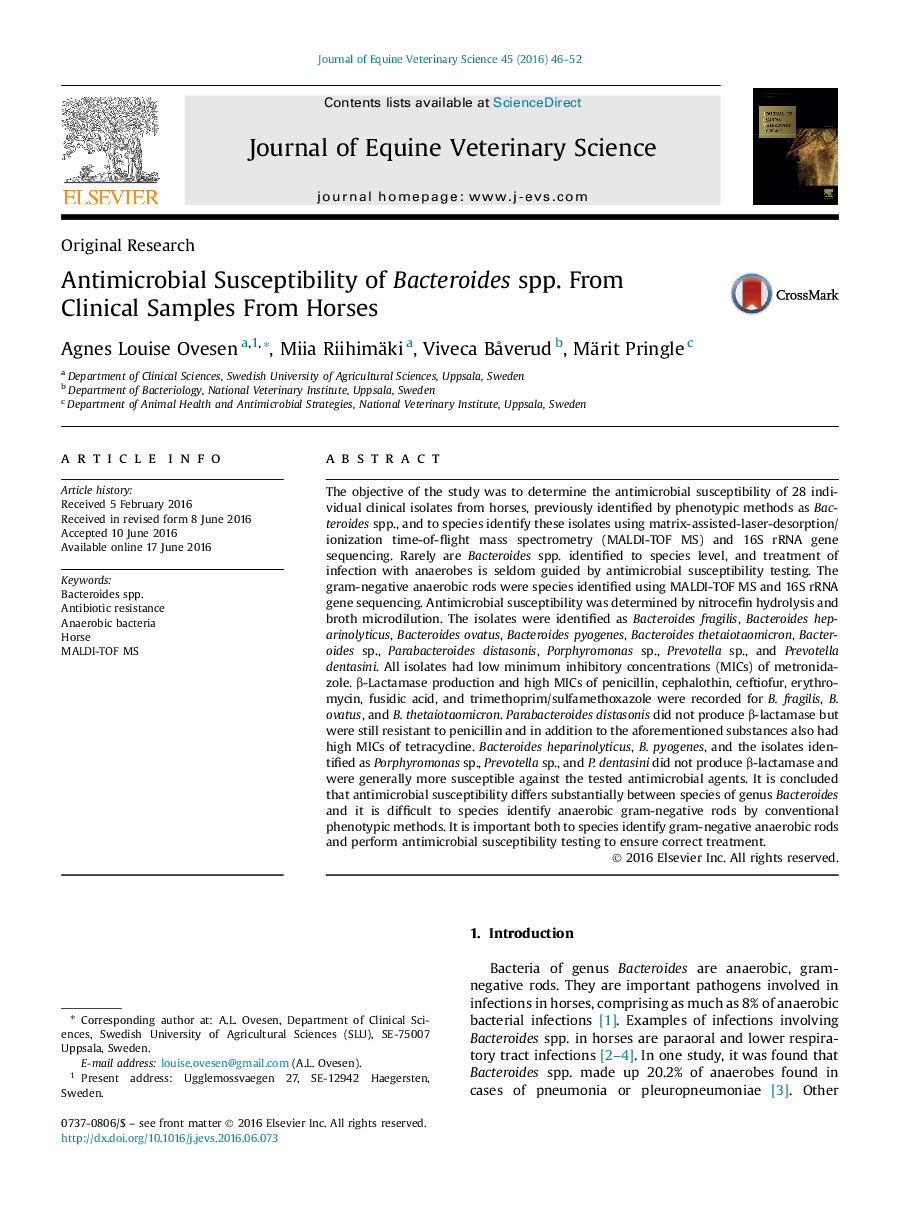| کد مقاله | کد نشریه | سال انتشار | مقاله انگلیسی | نسخه تمام متن |
|---|---|---|---|---|
| 2394335 | 1551555 | 2016 | 7 صفحه PDF | دانلود رایگان |
• Antibiotic susceptibility of 28 equine isolates of gram-negative anaerobic bacteria.
• Antibiotic susceptibility varies in between different Bacteroides spp.
• Few antibiotics that can be used in horses are active against Bacteroides spp.
• All isolates had low minimum inhibitory concentrations of metronidazole.
The objective of the study was to determine the antimicrobial susceptibility of 28 individual clinical isolates from horses, previously identified by phenotypic methods as Bacteroides spp., and to species identify these isolates using matrix-assisted-laser-desorption/ionization time-of-flight mass spectrometry (MALDI-TOF MS) and 16S rRNA gene sequencing. Rarely are Bacteroides spp. identified to species level, and treatment of infection with anaerobes is seldom guided by antimicrobial susceptibility testing. The gram-negative anaerobic rods were species identified using MALDI-TOF MS and 16S rRNA gene sequencing. Antimicrobial susceptibility was determined by nitrocefin hydrolysis and broth microdilution. The isolates were identified as Bacteroides fragilis, Bacteroides heparinolyticus, Bacteroides ovatus, Bacteroides pyogenes, Bacteroides thetaiotaomicron, Bacteroides sp., Parabacteroides distasonis, Porphyromonas sp., Prevotella sp., and Prevotella dentasini. All isolates had low minimum inhibitory concentrations (MICs) of metronidazole. β-Lactamase production and high MICs of penicillin, cephalothin, ceftiofur, erythromycin, fusidic acid, and trimethoprim/sulfamethoxazole were recorded for B. fragilis, B. ovatus, and B. thetaiotaomicron. Parabacteroides distasonis did not produce β-lactamase but were still resistant to penicillin and in addition to the aforementioned substances also had high MICs of tetracycline. Bacteroides heparinolyticus, B. pyogenes, and the isolates identified as Porphyromonas sp., Prevotella sp., and P. dentasini did not produce β-lactamase and were generally more susceptible against the tested antimicrobial agents. It is concluded that antimicrobial susceptibility differs substantially between species of genus Bacteroides and it is difficult to species identify anaerobic gram-negative rods by conventional phenotypic methods. It is important both to species identify gram-negative anaerobic rods and perform antimicrobial susceptibility testing to ensure correct treatment.
Journal: Journal of Equine Veterinary Science - Volume 45, October 2016, Pages 46–52
